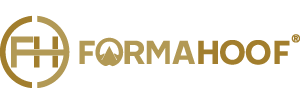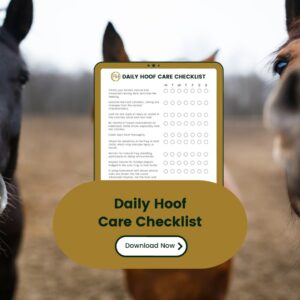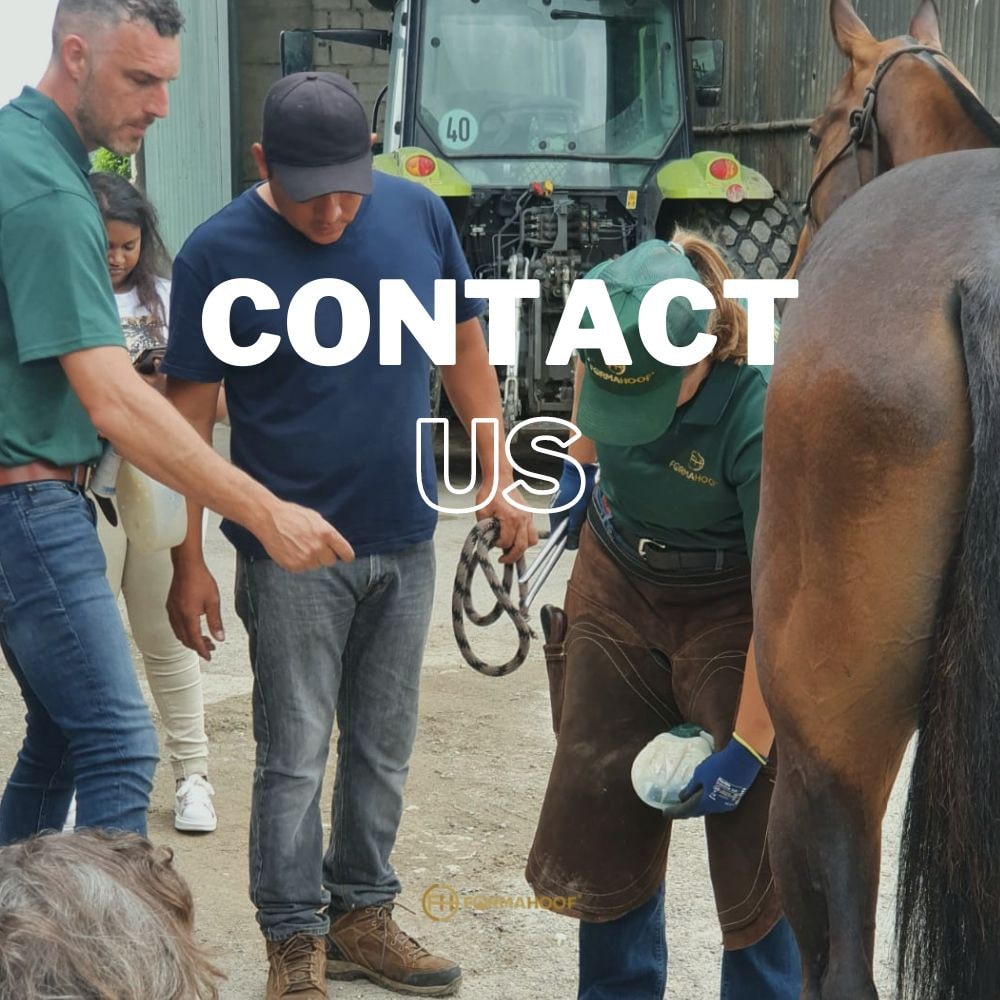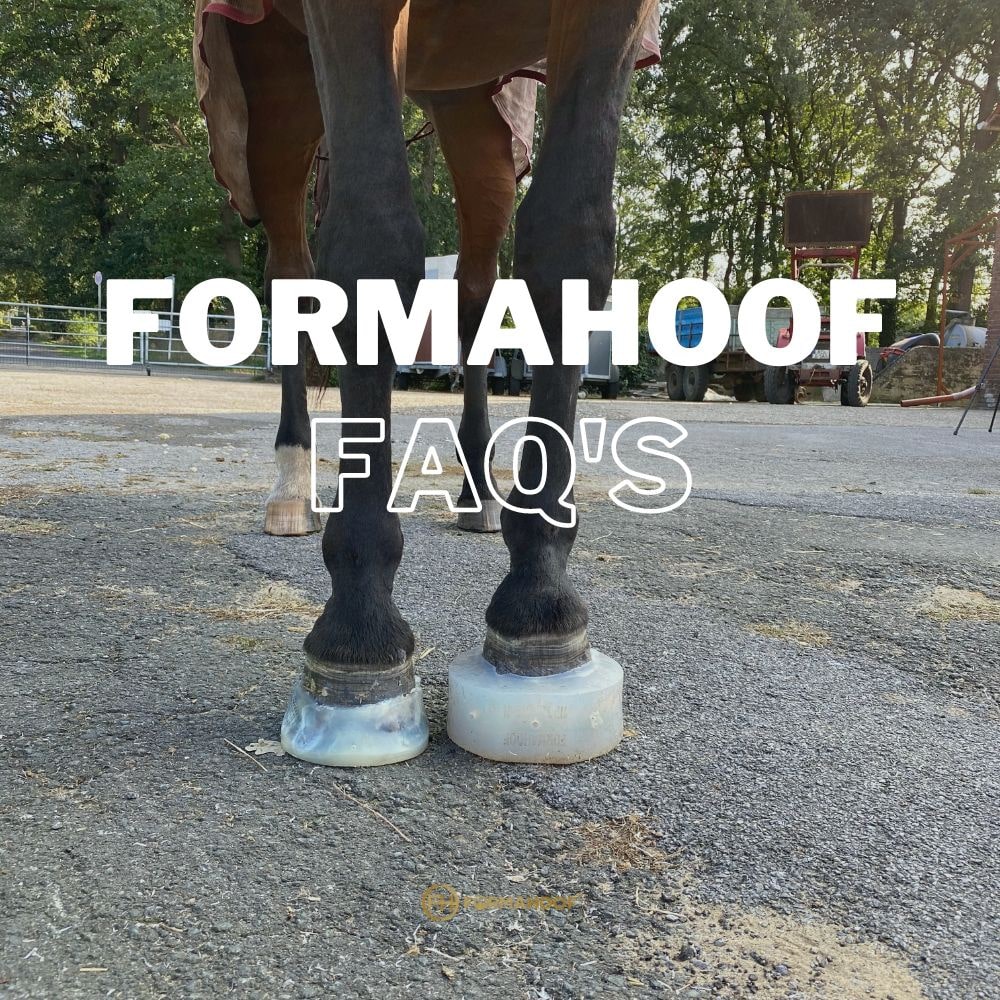Horse Hoof Abscesses, Bruises and Puncture Wounds
We begin our series about common hoof problems in horses by looking at the heel area of a horse’s foot.
No hoof – no horse. This old saying is, without a doubt, true. Probably even more so today as environmental and dietary damages to horses’ feet are more common than ever.
It may be the case that we learn more every day. However, the number of hoof-related problems and lameness has increased over the years.
As a horse owner, it is important to have a basic understanding of your horse’s feet, in order to do regular checks during your daily hoof care routine and keep your horse healthy, injury-free and to help avoid any lameness.
It is also important to understand that some hoof related pathologies, such as laminitis or navicular disease, develop over time and will not be solved in a heartbeat.
We have selected some of the most common hoof problems to explore in greater depth, to help you understand how to spot, treat, and prevent them.
Abscesses
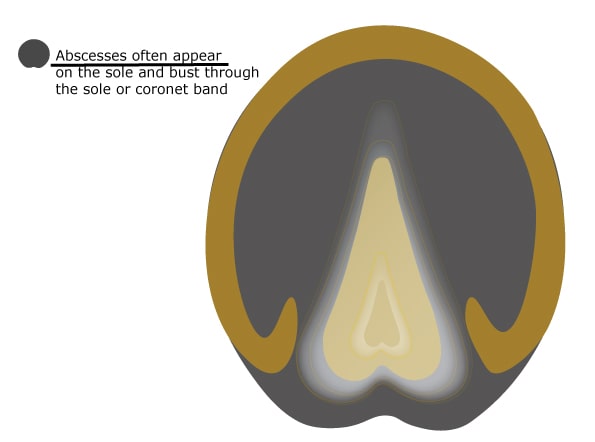
Abscesses commonly occur due to an injury or puncture wound to the sole of the foot. However, they can also be related to more severe pathologies such as laminitis. Commonly, bacteria invade the hoof through a wound in the sole, or a diseased white line. A sole bruise can also lead to a hoof abscess.
There are several actions which can be taken to help prevent your horse from developing an abscess caused by an external source:
- Regular trims and routine farrier care.
- Picking out your horse’s feet as part of your daily routine. A stone getting stuck in a horse’s hoof can cause an abscess and is avoidable.
- Walk your fields to ensure there are no objects which can cause problems, such as nails, glass, or sharp rocks.
- Make sure your horse’s hooves are strong enough with sufficient sole depth before transiting to barefoot. While hoof boots can offer protection to your horse’s feet, you may want to look at advanced solutions such as FormaHoof, which support sole depth growth within a short period of time.
Signs that your horse has an abscess include a dark patch on the hoof, bleeding, or pus around the hoof (particularly around the sole area), or lameness of the foot due to severe pain and inflammation. A hoof tester will give you an indication of whether there may be an abscess or not, however, any lameness should be followed up with a veterinarian or farrier to ensure the horse’s wellbeing.
Left untreated, abscesses can create their own draining track, meaning they may travel from the toe or the sole all the way up to the coronary band and can cause permanent damage to the coronet. The abscess naturally looks for the easiest way out.
If a horse gets recurring abscesses or a big enough abscess, it can permanently alter the way that hoof grows out. Consequently, you don’t want to leave an abscess untreated.
Bruises

Bruised soles can be one of the most common reasons why horses develop lameness. Even though horses are normally shod, injury to the sole can happen with or without shoes. Injuries to the sole can be caused by rocks, uneven terrain, or another trauma. Improperly fitting shoes can also cause injuries to the sole.
A bruise to the sole of the foot may or may not be accompanied by lameness. The sole can appear to be normal but may appear red, swollen, or moist. If left untreated, the affected area may become infected (subsolar abscess).
Bruising forms in the sole of a horse’s hoof when blood from the damaged capillaries (small blood vessels) leaks out. With no place to go, the blood gets trapped under the surface of the hoof sole. Usually removing the problem (e.g. picking out a stone) and giving the horse some rest will lead to a complete resolution.
In some cases, a haematoma may form. This is similar to a bruise but usually the blood has clotted, which makes it particularly painful when any pressure is applied. If you have ever suffered a haematoma yourself, perhaps after getting a finger trapped in something, you will have experienced the discomfort for yourself!
To help prevent sole bruises (solar bruises), you should regularly pick out and clean your horse’s feet, especially before exercise. If your horse is unshod, and bruised soles are a recurring problem affecting the horse’s quality of life, you should consider shoeing or advanced non-invasive methods such as FormaHoof to support your horse’s hoof health. FormaHoof can help horses to gain sole depth and allow the hoof to become stronger and healthier over a short period of time.
Generally, you may want to avoid working your horse on uneven, rocky, and excessively hard ground (especially if they are thin-soled).
Puncture Wounds

Most puncture wounds in horses’ feet are caused by a poor horse-shoeing technique, but can occur also when a horse steps on a foreign object such as sharp flint stones, pieces of glass, needles, splinters of wood, etc.
Foreign objects can introduce microorganisms into the sole of the horse’s hoof which can (but doesn’t have to) develop into an infection (see abscess). Horses that suffer a puncture wound are most often in severe pain and will show lameness. The foot will likely be warm or hot to the touch and a pulse may be felt into the hoof. Depending on the grade of inflammation, swelling may appear as far up as the fetlock and beyond.
Puncture wounds, however, should be treated and accessed immediately by your vet as, depending on the location of the wound, important structures within the foot may be affected such as the navicular bursa, the coffin joint, or the tendon sheath of the deep digital flexor tendon. The resulting infection is very serious and requires rapid diagnosis and treatment. X-rays can help identify which structures are affected.
Did you know?
Incorrectly place nails can be clustered in two types:
- Nail bind is the term used when the nail of the horse’s shoe is placed too close to the sensitive laminae of the foot, resulting in severe pain and pressure.
- Nail prick or nail quick is the term used when the nail of the shoe accidentally pierces the sensitive laminae of the foot.
The key to recovery from nail prick is early discovery and if spotted immediately a farrier can usually sort it. If an abscess develops below the sole of the foot, treatment may be prolonged and the outlook for recovery becomes guarded. In some unfortunate cases the infection can spread to the joints and outlook for recovery becomes unfavourable.
If your horse has stepped on a foreign object and the puncture is not caused by poor shoeing, make sure to call your veterinarian immediately and before removing the object! Prompt treatment with disinfectants and poultices is important, but depending on the type of object and position make sure you get advice before removing the object.
If an abscess has formed, the area will likely become warm and painful, and pus begins to build up. Your veterinarian may flush the wound every other day over a period. During this time, it is important to keep the foot area clean, dry, and protected until the puncture wound has fully healed. A FormaHoof application encapsulates the affected area and offers protection from all angles. As well as offering complete protection, the application can be customised if the wound does need to be flushed regularly.
Healing tends to be faster and easier to treat if the wound originates through the wall rather than the sole. If pain is severe, local analgesics can provide temporary relief. Antibiotics are not necessary, provided the wound is localized and good drainage is achieved. However, antibiotics might be needed if the coronary band is affected. And finally and crucially, all horses suffering from puncture wounds should be vaccinated against tetanus.
